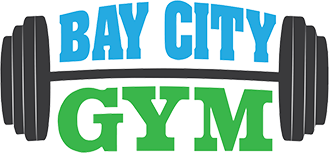Power training is a form of strength training with a twist. The main goal is to decrease the amount of time it takes you to apply a force (become more explosive at the movement pattern desired). Any sport which involves quick changes of direction, quick bursts of speed, jumping or even kicking can be enhanced through adding power training to an exercise routine.
Power is the combination of speed and strength. The main focus of power training is to maximize strength in the smallest amount of time. The most common sport that necessitates quick strength is Olympic weight lifting. However, many sports such as soccer, rugby, AFL and basketball, or even things like martial arts and gymnastics, require explosive power.
Plyometric training is a form of exercise designed to improve sport performance by increasing speed along with power by training contracted muscles in a rapid sequence. First, the muscle must be stretched, or loaded, then contracted, or tightened. This generates a strong contraction in the shortest amount of time. Box Jumps, the most common plyometric exercise, uses body weight and gravity to build muscle. This requires an individual to squat down and explosively jump up onto a box of varying heights. Starting from a static position requires the individual to produce maximum force since it takes more strength to move something initially. Once momentum comes into play, the amount of force and speed needed diminishes.
This type of training is not for the beginner. It is a high-intensity workout requiring strong, sudden muscle contractions. This type of training demands a high level of body control. It is necessary to regulate your breathing patterns while commanding the appropriate muscle contractions to maintain form and perform at peak ability. Good physical strength, flexibility and proprioception, or knowing where your body is in space, are prerequisites to avoid injury. Since this training typically is used by elite athletes to enhance performance, a high degree of physical fitness must be reached before attempting it. If you are not in the greatest physical shape, it is best to begin with a standard low impact, slow and controlled strength training routine for several months.
When power training, it is important to implement a thorough stretching and warm-up routine with gradual load progression to reduce chance of injury. Listen to your body and if you have had a recent injury you should gain medically clearance before starting. For those who suffer from a chronic injury, power training will not be the best option.
Example power session for lower body
- 5 minute stationary bike warm-up with dynamic stretching
- Front squats – 4 reps 4 second eccentric with explosive upward movement
- Box jumps – 8 repetitions
- Kettle Bell Swings – 30 seconds working
- Back squat loaded vertical jumps (use 20% of your 1Repetition Max) 6 repetitions
- 200 metres Treadmill sprint
- Repeat 5 times
For optimal performance, you need to perform power development for both
the lower body and the upper body.


